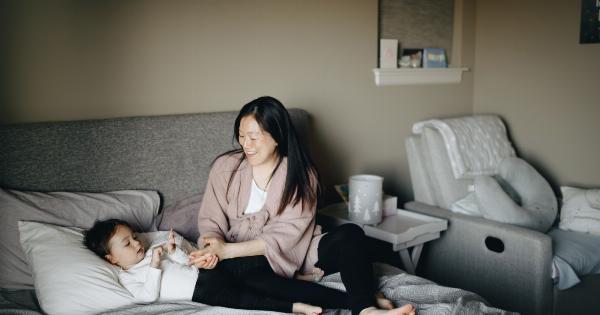Creating a safe and healthy environment in your bedroom is crucial for your overall well-being. Your bedroom is where you spend a significant amount of time resting and rejuvenating, so it should be a sanctuary that promotes relaxation and good health.
In this article, we will explore various ways to optimize your bedroom to ensure safety and promote a healthy lifestyle.
1. Proper Ventilation
One of the key factors in creating a safe and healthy bedroom is proper ventilation. Good air circulation helps to remove indoor pollutants, regulate humidity levels, and prevent the buildup of mold and mildew.
Ensure that your bedroom has windows that can be opened to allow fresh air in. Additionally, consider using an air purifier to filter out airborne contaminants and improve the overall air quality.
2. Natural Light
Another important aspect of a healthy bedroom is incorporating natural light. Exposure to natural light helps regulate your sleep-wake cycle and boosts your mood. Place your bed near a window to maximize sunlight exposure during the day.
If your bedroom does not receive sufficient natural light, consider using full-spectrum light bulbs that mimic natural sunlight.
3. Non-Toxic Materials
It is essential to choose non-toxic materials for your bedroom furniture, bedding, and décor. Many conventional products contain harmful chemicals that can off-gas and negatively impact your health.
Opt for organic and sustainable materials such as organic cotton bedding, naturally derived paints, and furniture made from low VOC (volatile organic compounds) materials. This promotes a healthier indoor air quality and reduces exposure to harmful substances.
4. Mattress and Bedding
Your mattress and bedding play a significant role in creating a safe and healthy sleeping environment. Choose a mattress made from natural materials such as organic latex, organic cotton, or eco-friendly memory foam.
These materials are hypoallergenic, resistant to dust mites, and free from harmful chemicals. Consider investing in organic cotton or bamboo bedding that is breathable, moisture-wicking, and gentle on your skin.
5. Declutter and Organize
A cluttered bedroom can create stress and anxiety, making it challenging to relax and unwind. Make it a habit to declutter and organize your bedroom regularly.
Remove unnecessary items, find proper storage solutions for belongings, and create a clean and serene space. Keeping your bedroom tidy not only improves safety but also promotes better sleep and mental wellbeing.
6. Proper Lighting
The lighting in your bedroom should be carefully considered to create a safe and tranquil atmosphere. Use a combination of ambient lighting, task lighting, and accent lighting to cater to different needs and moods.
Install dimmer switches to adjust lighting levels according to your preferences. Avoid harsh fluorescent lighting and opt for warm, soft lighting options that promote relaxation and comfort.
7. Noise Reduction
A quiet bedroom is essential for a restful sleep. Excessive noise can disrupt your sleep patterns and increase stress levels.
Minimize outside noise by using soundproof curtains, sealing gaps around windows and doors, and using white noise machines or soothing nature sounds to mask disruptive sounds. Investing in a quality pair of earplugs can also be beneficial if you live in a noisy environment.
8. Maintaining a Clean Space
A clean bedroom helps prevent allergies, respiratory issues, and the spread of germs. Dust, vacuum, and mop your bedroom regularly to minimize the accumulation of dust, pet dander, and other allergens.
Wash your bedding and curtains frequently to remove allergens and maintain a fresh and clean sleeping environment. Remember to use eco-friendly cleaning products to avoid introducing toxic chemicals into your bedroom.
9. Temperature and Humidity Control
Optimal temperature and humidity levels in your bedroom are essential for a comfortable and healthy environment. Keep your bedroom cool in the summer by using fans or air conditioning and warm in the winter using space heaters or central heating.
Use a hygrometer to monitor humidity levels and maintain them between 30-50% to prevent the growth of mold and mildew.
10. Creating a Relaxing Ambiance
Finally, create a relaxing ambiance in your bedroom to promote a restful sleep and overall well-being. Choose calming colors such as soft blues, greens, or neutrals for your walls and décor.
Incorporate natural elements such as indoor plants, which can improve air quality and reduce stress levels. Use aromatherapy diffusers with essential oils known for their calming properties, such as lavender or chamomile.
Conclusion
A safe and healthy bedroom is essential for optimal sleep quality and overall well-being.
By incorporating proper ventilation, natural light, non-toxic materials, and maintaining cleanliness and organization, you can create a sanctuary that promotes relaxation and good health. Remember to consider all aspects, from your mattress and bedding to lighting and ambiance, to ensure a safe and healthy environment for restorative sleep.





























